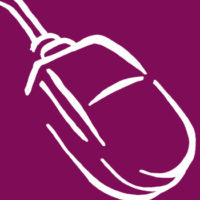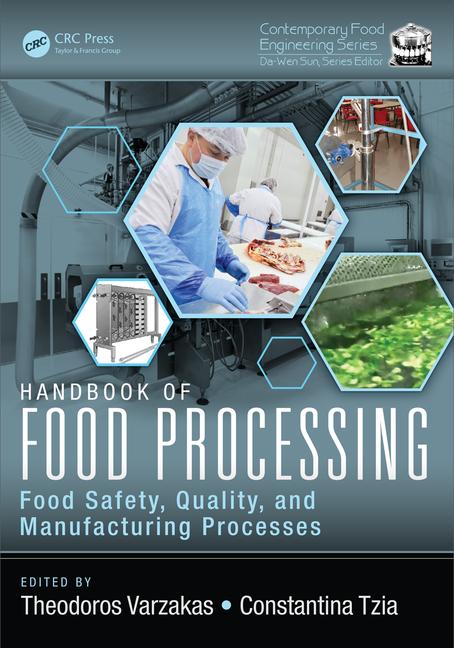Ensuring Water Quality & Safety in Food Operations

When we think of food safety, the first things that come to mind are handwashing, time and temperature and cross contamination. It isn’t very often, though, that we consider water as an important player in this mix. I’m guilty of this as well. However, there is no company in the food industry that does not rely on potable water for its basic operations and production. Over the past few years, the literature has been replete with food misadventures directly or indirectly associated with water. While the most severe and most widely publicized outbreaks involved H2O other than potable water, there are enough citations issued for us to consider the water we use in our plant or restaurant as an important contributing component to food safety assurance.
While the conditions reported on the local level are not always directly related to a classical foodborne disease outbreak, somehow water always seems to be an epidemiological determinant variable. For instance, water spray on vegetable displays in a food retail establishment and on a case near a decorative fountain in a lobby of a restaurant were the sources of Legionellosis outbreaks (the latter resulting in a fatality). These are prime examples of water misadventures in a food environment that are not usually considered by food safety professionals. But let’s get back to basics—at least from this sanitarian’s perspective.
Even though the water quality from a community source or drawn from a well is of satisfactory bacterial and chemical quality (at least in accordance with regulations), if the plumbing or other water storage and transport facilities in the food manufacturing plant or restaurant are substandard, water safety and quality can be seriously affected. This can result in a variety of misadventures including waterborne disease organisms being introduced into the potable water supply; contamination altering the chemical quality of the water for production or culinary purposes, including taste and odor; and inadequate peak demand quantity and pressure maintenance problems that can dramatically effect production and compromise sanitation.
The U.S. Food and Drug Administration (FDA) Food Code and other food-safety-related regulations are silent on many issues concerning water that sanitarians frequently encounter. Although some conditions do pose some risk, most are not exactly risks to the public health. These anomalies to otherwise fully compliant and well-functioning plumbing systems can indirectly impact the quality of food safety, as well as efficiency of production and economics of the operation.
Simple Tools to Determine Quality
I learned many years ago from a seasoned sanitarian that if I conducted four simple tests on things that had to do with water, I could make a real difference in the operations of my clients, and as a sidebar, improve food safety.
The first was using a Brix refractometer from my inspection tool kit. Measuring the syrup content in post-mix beverage dispensing devices can mean a significant difference to the profit margin of a restaurant or bar. If the water chemistry is slightly off—usually taste and odor due to chlorine, iron, manganese or a higher-than-normal total dissolved solids (TDS) measurement, just to name a few—you can tell that more syrup has been used to compensate for the poor water quality. The same is true for the bar operations, where water quality has even a greater impact. Nothing is worse than a top-shelf liquor chilled with ice cubes that taste like a swamp or a highball made with chlorine-flavored water or ginger ale. The Brix number often points to some problem with the water quality suggesting that a simple yet cost-effective point-of-use drinking water treatment unit will correct the problem. In my experience, when implemented this method will realize an improvement to the water quality and enhance safety to the water system by virtue of a professional hand involved with its installation, and owners do see a difference to the establishment’s bottom line. I also highly recommend using a TDS meter at this step.
My second test is sampling water for hardness. The results have had similar positive outcomes to the TDS screen. The hardness test is less than a two-minute chore and could mean a marked difference in the production of hot water and steam; spotting of dinner and glassware; the efficiency of ice machines; grease and soil removal during cleanup, and, improvement of the general aesthetics of the public areas.
The third test is measuring the pH of the water at several taps in the facility. A lower-than-normal pH could indicate the possibility of corrosion and the potential for leaching lead and copper from the system. Sometimes the variation in pH points to a deadend line. It is for this reason, I sample at several points. This test often supplements finding an illegally placed saddle clamp on a copper; which may be an indication of damage caused by aggressive water.
Finally, I always use a colorimeter to measure free and residual chlorine, particularly in semi-public water supplies. Although this is more for code compliance, it gives me a sense of security in the event that I inadvertently missed something minor in my inspection of the plumbing system that could lead to a waterborne disease outbreak.
In addition to these tests, if I notice any modifications to the plumbing system including the new addition of equipment or remodeling a production area, I generally check the flow and pressure. It is a rare case in which these reconfiguration efforts do not result in a marked restriction of these two parameters. Flow and pressure affects the operation of dish machines, clean-in-place (CIP) systems and any other piece of equipment that uses water in its operation.
It does not take a lot of time or effort to evaluate the adequacy of the supply and pressure of the water system in a facility. I routinely use a simple device consisting of a pressure and a flow gauge; controlled by a single valve. This unit was originally designed by a well-known manufacturer of lawn maintenance equipment and is used to measure lawn irrigation systems. However, it is perfectly suited to work in the food setting. I attach the gauge assembly unit to sill cocks at remote locations of a plant or restaurant, turn on the tap and read the gauges. I have found that if I do this annually, I can prevent—with the help of a good maintenance guru—most problems arising from inadequate water pressure and/or flow. I view this as another small service to my customer, with a big return.
Lessons Learned
Over the years, it became apparent to me that the greater the attention paid to water quality and the water system, the more profound was the positive effect on food operations. For these reasons, I developed a set of eight rules to consider in evaluating water quality and the features of water distribution system planning, maintenance and operations. These rules provide a logical and reasonable way to look at a facility’s water and water system, and it is prudent to give them due consideration while inspecting the food production plant or retail food establishment. This list of rules and corresponding examples is by no means all inclusive; however, it does help to understand the complexity and interdependence of water and water systems to food safety.
Rule Number One: The system should be designed to provide an adequate supply of water at ample pressure to the extremities of the system.
I can’t overemphasize the importance of a systematic and detailed facility plan review. Part of the plan review is calculating a conservative estimate of the water needs of a food processing plant, restaurant or institutional kitchen. A comprehensive plan review, whether for new construction, reconstruction or facility modifications, or as an inventory for determining food safety and operations, is an absolute necessity in estimating the total preparation, processing and sanitation water needs. It takes into account peak flow and minimum pressure demands for food processing equipment; hot water, beverage, ice manufacturing and CIP systems; mechanical ware washers and sanitary facilities to cite but a few examples. The water needs inventory of the plan review provides a baseline from which to plan any modifications to the plumbing system. Anything added to an existing plumbing system by way of extensions or equipment, including that of water conditioning and purification devices, will have an effect on the supply and pressure.
Rule Number Two: The safety, palatability and process or culinary compatibility of the water should not be impaired by defects in the system.
The corollary to this rule is: The more complicated or complex the water system, the more that can go wrong. Likewise, the more a system has been altered, the greater the possibility of creating a condition conducive to contamination.
Rule Number Three: The bacterial, chemical and physical characteristics of the water should never compromise safety or interfere with operations.
Consider if you will, that practically all the water from public or private supplies has been exposed to some pollution while falling as rain, running over the ground surface or in streams and rivers, or percolating through the soil. No system is entirely immune from some form of contamination, and no amount of vigilance will ever bring the risk factor to “zero”; but we can stack the odds in our favor.
Everyone involved in the food business should readily have on hand the test results for the primary and secondary drinking water standards, which are routinely performed on every public and semi-public water supply. In some cases, this needs to be augmented with several other internal evaluations. The beverage bottling industry has this down to a fine science. Lessons can be learned from the semiconductor and pharmaceutical industries, as well. They have many unique approaches to water purity and purification that are well-suited to the food industry.
Basically, any contaminant can effectively be removed from water. In almost every instance, the cost of the corrective measure pales in the return of the investment. The Water Quality Association (www.wqa.org) has an excellent competency-based program for certifying water quality specialists and installers. These listed, credentialed professionals are an excellent resource for any business having to deal with some form of water purification.
Rule Number Four: No unprotected water storage device or physical cross-connection with another water carriage system, whether potable or non-potable, should exist.
There are ample references to back-siphonage and cross connections. All health departments are glad to provide anyone with information on these conditions. It is fairly easy to spot the lack of an air gap, follow the proper configuration of check valves on a carbonator system, or identify a direct cross connection. However, merely placing a backsiphonage device on a water line does not necessarily insure the absence of backsiphonage. For example, many vacuum breakers in kitchens and food production facilities were originally placed on taps. These in turn were modified by the addition of a hose and a hose nozzle, which results in the vacuum breaker being maintained under constant pressure and contact with water. To ensure that the vacuum breakers work as intended, a yearly inspection of the diaphragm and other internal parts is a must. This is part of protecting the water system.
In the Legionellosis cases, an improper water storage system seemed to be the culprit. The decorative fountain in the restaurant lobby was probably the most obvious and the lessons learned from it can easily be applied to other scenarios. The fountain was a closed system: no water in or out. The fountain was illuminated with incandescent colored lights that generate heat, creating an ideal environment for the Legionella organism. The untreated, stagnant contaminated water was aerosolized by the fountain; the droplet nuclei spread by an airborne route to susceptible customers. A bit more complex, but basically the same conditions, was demonstrated in the outbreaks created by the vegetable spray in supermarkets.
Rule Number Five: The plumbing system including any connection should be tight to prevent leakage, and at no time should any portion of the system be submerged by surface water or subjected to any other source of contamination.
This is more frequently encountered with older construction. I am sure that almost every sanitarian has seen these conditions in older dairy and canning plants, abattoirs and institutional kitchens that have an enclosed pipe chase in the center of their cooking islands. For example, we also see leaks around ware washing machines from constant vibration of the water supply lines; portable equipment from wearing of the hose connectors and gaskets, and around frequently used plastic ball valves that simply wear out with age. These can also serve as stagnant reservoirs for bacteria. Any leak is a potential backsiphonage point.
Rule Number Six: The plumbing system should be designed to afford effective circulation of water and with a minimum number of deadend lines.
Deadend lines happen. They are never designed into the system, but appear when renovations or plant modifications are made and when new equipment is introduced. For some reason, few establishments recognize the public health potential in leaving a deadend line.
Long-run abandoned deadend lines cannot be effectively disinfected and may become bacterial breeding grounds. In ninety nine out of one hundred cases, these bacteria are harmless heterotrophs, but they can impart an off-taste and odor to the system and significantly reduce the life of water treatment components such as charcoal, ion exchange media and particulate filters. They do this through retrograde spread along the plumbing system and the formation of biofilms. In the one case out of a hundred, the bacteria can cause disease. For this reason, I encourage all facilities to install a blow-offs at the end of every deadend line or stub; better yet, eliminate the deadend line.
Rule Number Seven: Sufficient valves and blow-offs should be provided to permit repairs without undue interruption of service and to allow flushing of the system.
There is not much to say about this rule that has not been said in the rule. All too often, we see repairs that are arduous to say the least, and virtually impossible to decontaminate on the first try when returned to service. The downtime and loss of revenue should be a strong enough incentive to install bypass valves and blow-offs where needed.
Rule Number Eight: The system should be maintained with due precautions against contamination of the water in any part of it as the result of repairs, replacement or extension of mains or lines and components.
This goes more to quality assurance. Every food processing plant that has sanitation standard operating procedures (SSOPs) should include a section on water system repairs and decontamination. For smaller operations such as restaurants and institutional kitchens, the person or company providing service to the water system and its components should be obligated to detail their contamination prevention and control procedures. In both cases, a QC check list should be standard practice.
The Bottom Line
I have only scratched the surface of water protection and purification in food operations, and have only presented those issues significant to a sanitarian. I hope to considerably expand on some of these topics in future issues. As an industry, we have been somewhat remiss in addressing the safety, utility and economy of water in our operational areas. This is not to say, we allow unsafe water; quite the contrary. However, we have not used the water industry’s full potential in addressing our water needs and requirements.
Forensic sanitarian Robert W. Powitz, Ph.D., MPH, RS, CFSP, is principal consultant and technical director of Old Saybrook, CT-based R.W. Powitz & Associates, a professional corporation of forensic sanitarians who specialize in environmental and public health litigation support services to law firms, insurance companies, governmental agencies and industry. He welcomes feedback or suggestions for topics you’d like to see covered can be sent to him directly at sanitarian@juno.com or through his website at www.sanitarian.com.
Looking for a reprint of this article?
From high-res PDFs to custom plaques, order your copy today!






